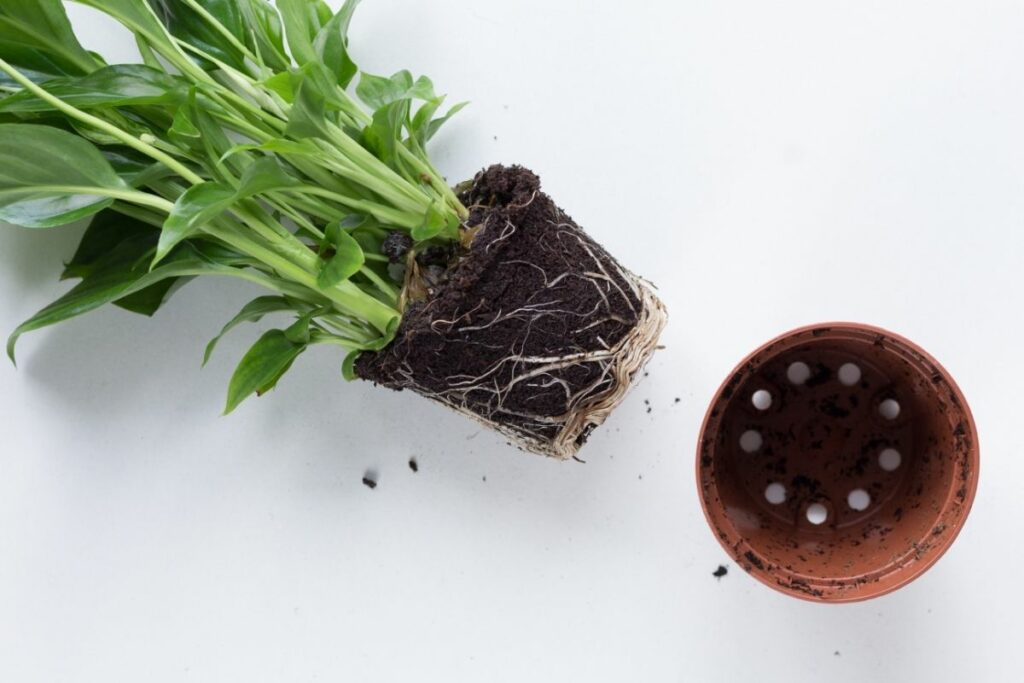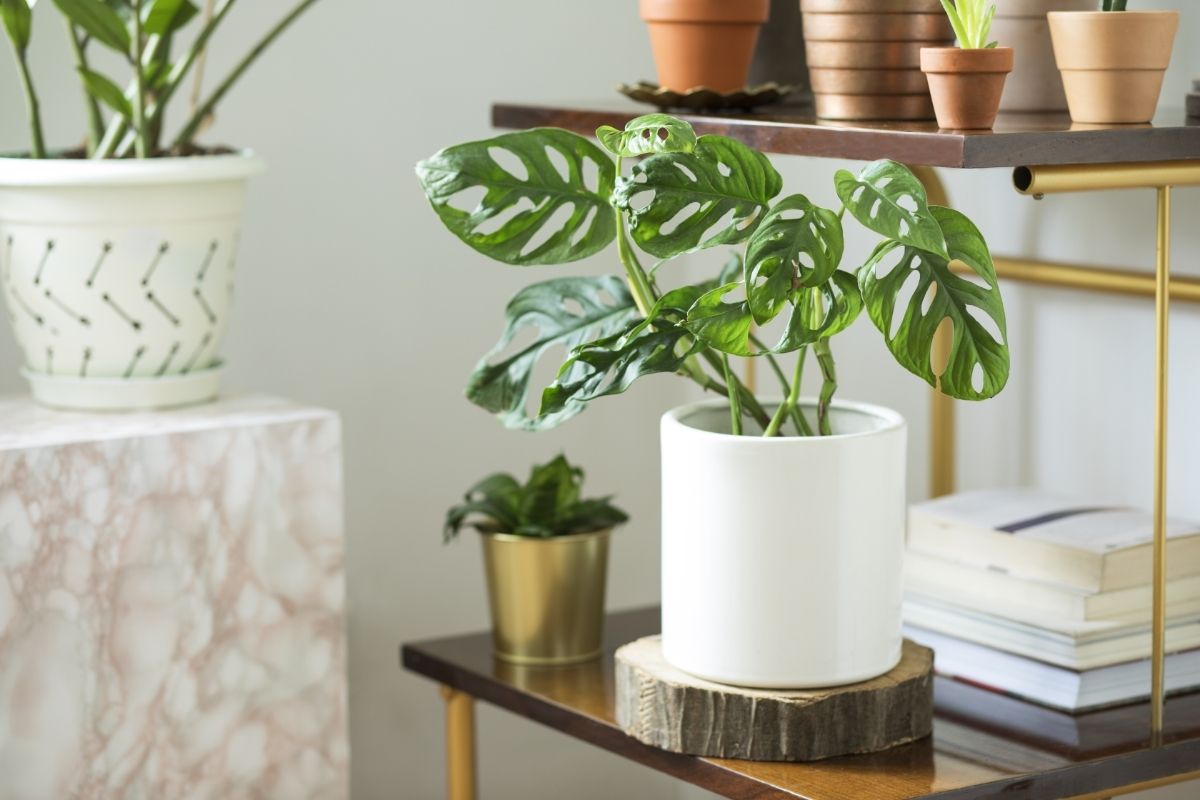No one likes to hear the words root rot. Especially when it’s in relation to your houseplants. It is difficult to get rid of, and it spreads incredibly quickly.

Soon, it will take over your beautiful plants – turning them from colorful masterpieces to drooping, yellow, and black messes.
However, once people find out their plant has root rot, the most common reaction is to just dump it. This is because they don’t know what root rot actually does to a houseplant, or how you can get rid of it!
If you suspect your lovely houseplant is suffering from root rot, have a read of this guide to the disease. We will explain what causes it, what you should look out for if you think a plant may have it, and the quickest way to make your plant healthy again.
What Causes Root Rot In Houseplants?
Root rot is essentially caused by an infection – either fungal or bacterial. This mainly happens when houseplants don’t have a drainage hole in the bottom of their pot, or if the plant has been overwatered.
Because the pathogens that cause infections thrive in wet conditions, like wet soil, they will start to break down the root system. Your plant’s roots will begin to suffocate because they can’t get any oxygen (as the conditions are so waterlogged), so your whole plant will slowly start to rot under the soil.
This decay will eventually spread to the healthier roots since the bacteria has already entered the soil conditions.
As well as this, it may be caused by a fungus that is already in the soil. It can stay in the soil without you even realizing it, but as soon as you accidentally overwater your plant, the fungus will jump on this opportunity and attack your roots.
Since the roots are necessary for your plant’s survival (as they are what absorb water and fuel for the foliage above the soil), when they begin to suffer, the rest of your plant will also begin to die.
What Are The Main Signs Of Root Rot In Houseplants?
The main things to look out for if you suspect your houseplant may be suffering from root rot is:
- Yellow leaves – The leaves might start off looking dull and lifeless, but as soon as they turn yellow you should take notice. However, you shouldn’t confuse the yellow leaves from root rot with yellow leaves from underwatering your plant. When it is dehydrated, the leaves will also curl and begin to drop off the plant.
- Small leaves – The new leaves that will grow from the plant will be unusually small and underdeveloped. This is because they aren’t accessing the right amount of nutrients from the soil because the roots aren’t working properly.
- Wilting – The whole plant is wilting and looking like it is caving in on itself.
- Black roots – When you take the plant out of the soil, the roots will be black and mushy.
- Dropping roots – The individual roots fall off the root system and the plant when you pick the plant up.
- Smell – One of the biggest indicators of root rot in a house plant is an awful smell. If it has a slightly sour or eggy odor, this means that your roots are most definitely rotten.
How Can You Get Rid Of Root Rot?

If you spot the signs of root rot early enough, you should be able to treat your houseplant and fully nurse it back to health.
Step 1
You should immediately remove your plant from the water-logged soil and infected conditions. As this soil will hold the infections, it should be thrown away and not reused.
Shake/brush the roots of the plant to try and get rid of all of the soil you can. You might even want to think about washing it with cool, distilled water to ensure that none of the contaminated soil is left on the root system.
Step 2
Next, you will need to cut the damaged and infected roots and leaves off your plant. Make sure to clear your scissors/knife before you start this process, and keep cleaning them throughout.
This is because the infection will remain on your tools and you don’t want to accidentally infect other roots and parts of the plant!
While you are cutting the roots, you will also need to tackle the root system. However, if you find that you are cutting away more than a third of this part of the plant, then it may not actually survive.
It is likely the infection will keep spreading, and there won’t be enough of the root system left to bring it back to its former state.
Step 3
Now, clean your scissors again and cut at the foliage part of the plant. There is a rule that says you should cut as much of the foliage as much as you have of the roots.
This means that when you replant it, the reduced roots won’t be overpowered in supporting the amount of foliage! So, if you cut one-third of the roots off, you should do the same amount for the foliage.
(Optional) Step 4
You have the option to treat your plant with a fungicide. Follow the instructions on how to use this on your houseplant – you will often fungicides that treat specific varieties of plants, so keep an eye out for one that will work with your plant!
Step 5
All that is left for you to do is replant your houseplant in a new pot (with a drainage hole). You must use new soil, however, you could potentially use the pot the houseplant previously lived in.
You will need to clean this incredibly thoroughly with a water/bleach solution to make sure it isn’t harboring any infection.
How Can You Prevent It In The Future?
Don’t Overwater Your Houseplant
Since this is the main cause of root rot, you should always check the moisture levels of your plot before you water it. As well as this, you can research your specific houseplant beforehand, to see how much water it generally takes!
Make Sure Your Plant Has A Good Drainage System
Your plant pot should have a drainage hole and a dish underneath this pot. This means that the roots of the plant won’t be sitting in stagnant water for days if it has been overwatered. You will also need to empty the dish regularly!
Secondly, make sure that your plant soil isn’t too heavy or light for your plant. Research beforehand what type of soil your plant will like, as varieties of species like different temperaments.
Check The Root System Of A Plant Before You Buy It
When you are at a gardening center, quickly pop the plant out of its pot and take a look at the root system. If it is a pale green or white and doesn’t have a bad smell, then you are starting off with a healthy root system. This will make it easier to maintain good conditions.
To Sum Up
Root rot will break down the root system of a plant by infecting it with bacterial or fungal diseases. This will then stop the plant from getting any oxygen, so the leaves, stems, and flowers will begin to droop and turn yellow.
If your plant is suffering from root rot, remove it from the soil and chop off all of the infected areas.
- Best Hanging Plant For Low Light - September 4, 2023
- Best Indoor Plants Florida - August 28, 2023
- Best Plants For Bathroom Smells - August 21, 2023








